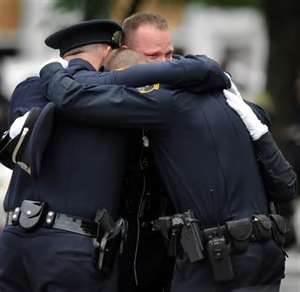“Media” can connect us in times of divisive communication.
I was sitting in a church service the Sunday morning after the Newtown massacre, and like many churches that day…the topic of discussion surrounded the events of this tragic shooting. Here we are over a few weeks removed and the discussion is still in full force…we are trying to seek answers.
We are asking ourselves lots of questions. We are wondering why these images of the children are being shared all over the television screens, websites, and social media platforms.

Many have debated whether the media coverage of these events have blatantly crossed the lines…from numerous angles. Whether it may be questioning the intentions of journalists trying to question children witnesses right after the events *or* spending too much time in this small town compiling continuing coverage…many believe that “media” has created a division in public discourse. I am thinking through this idea of overall access to media including the news media and coverage of topical items. “Media” brings us access to frontline discussions.
Media is defined as “tools used to store and deliver information or data”. (From Wikipedia).
Oxford Dictionary defines media, “The word is also increasingly used in the plural form medias, as if it had a conventional singular form media, especially when referring to different forms of new media, and in the sense ‘the material or form used by an artist”
“The Media” is also defined by Oxford Dictionary as “(the media) [treated as singular or plural] the main means of mass communication (television, radio, and newspapers) regarded collectively.”
“Media” provides access to information, bridging divides by allowing individuals to share information. We are connected via media through the contextual understanding of events. From images of the events in Newtown to the editorial dialogues of the news media that bring us context from the “inside” of the story.
Stories come in many forms. We see them from the televisions from inside our living rooms. We hear them on the radio and through podcasts. We share them through our connections as we talk amongst each other, either in person or online.
“The Media” or journalists provide this frontline access to these stories as they unfold, painting the picture for us to see, hear, smell, and relive in our daily lives. Technology is the connection point to these stories…these thoughts, these moments in time where we feel so connected. As time moves along in linear fashion…we will shed tears even as those events venture further and further in the past.
We not only “lean in” to the stories that bring us context, but to the people who share and bring to us to the front-lines each and every time. Think…how many times did you share your thoughts about Newtown, shed a tear, then maybe hugged someone. “Media” can connect us in more ways than just interacting online.
